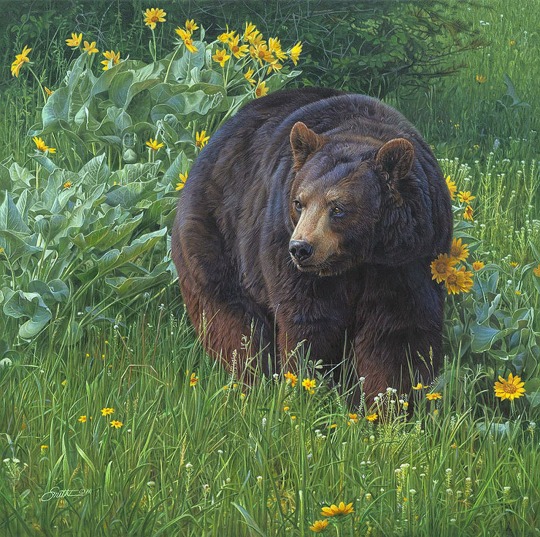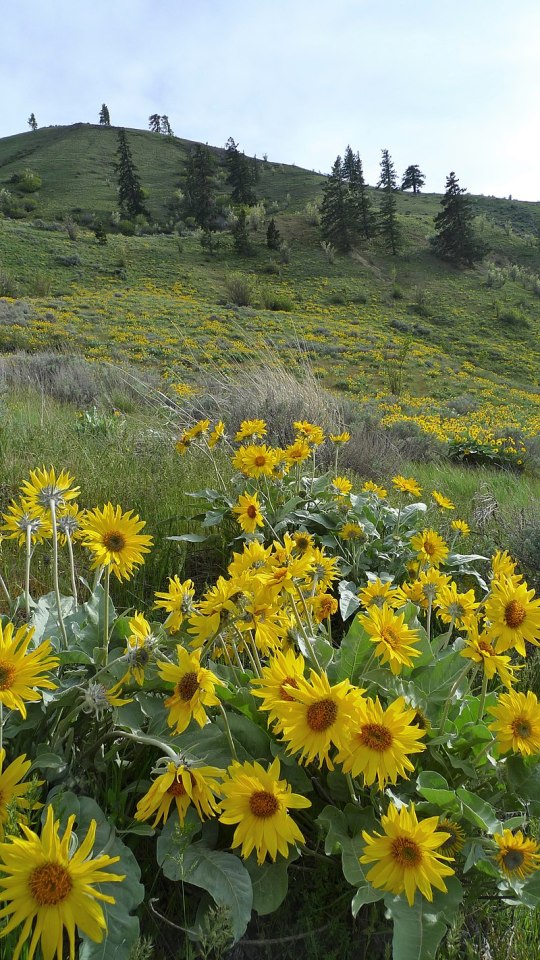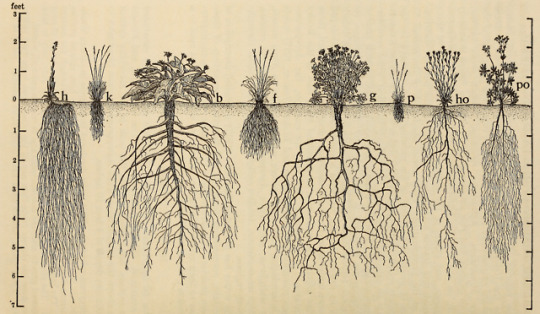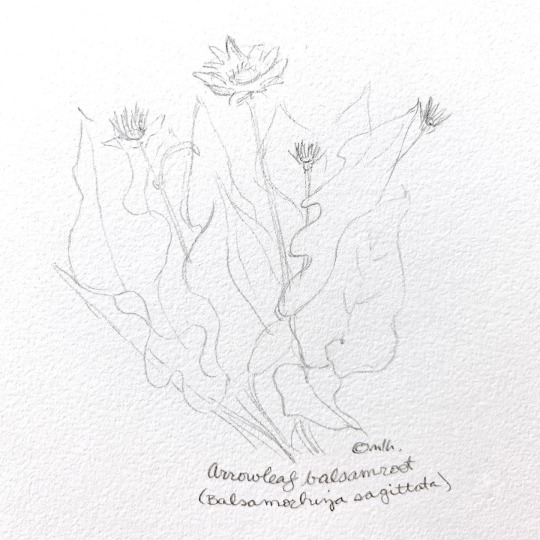#Balsamorhiza
Explore tagged Tumblr posts
Photo
Falling into a Dream (May 2023), photography by Erwin Buske Wildflowers such as Arrowleaf Balsamroot (Balsamorhiza sagittata) and Lupine (Lupinus) blooming in synch at Rowena Crest in the Columbia River Gorge.

#Erwin Buske#Columbia River Gorge#May 2023#Hood River#National Scenic Area#Washington#Oregon#Rowena Crest#wildflowers#blooming#sunset#Arrowleaf Balsamroot#Balsamorhiza sagittata#Lupinus#lupine#bluebonnet#lupin#photography#nature photography#Falling into a Dream#Wildblumen#Pfeilwurz#Lupine#Pfeilblättrige Balsamwurzel#Эрвин Буске#Бальзамориза стреловидная#Люпин#волчий боб#Каньон реки Колумбия#США
473 notes
·
View notes
Text




Osmia montana on common blanketflower (Gaillardia aristata). These giant mandible-d mason bees are specialists on sunflower family plants (Asteraceae), foraging on arrowleaf balsamroot (Balsamorhiza sagittata) in the spring and moving on to blanketflower at the cusp of summer. Pollen collection is done through quickly thumping the abdominal scopa on florets.
#hymenoptera#osmia#osmia montana#gaillardia#gaillardia aristata#bees#pollination#asteraceae#native bees#bee#bugblr
3 notes
·
View notes
Text
Medicinal Herbs and Poisons - B (WIP)
Bamboo - Arundinaria
Alt Name(s): Cane
A fairly resilient and adaptable, hard ‘shelled’ grass-like plant commonly used for crafting barriers. There are three variants known to the western side of the world - river canes, mountain cain and short cain with river cain being the most notorious and the largest. Typically have round, sort of sharp-shaped leaves with various branches toward the top - they can easily be mistaken for trees.
Growth Conditions: Very Resilient - can handle partial, full and no shade alongside anything from dry to wet soil. Prefers loamy earth with high organic materials thought.
Found In:
The outskirts of the Greenwood Forest
Along the major river
Sporadically scattered in the Vastweald
Effects:
Roots - A general painkiller
Used In:
Pain Soothers
Alternative(s): Sticks (less effective, prone to splintering)
/ / / /
Basamroot - Balsamorhiza sagittata
Alt Name(s): N/A
One of the many sunflower lookalikes, balsamroot has silvery-gray leaves covered in tiny little hairs (especially on the back) that get smaller the higher up they are on the tall green stem. At the top is usually one blossom although two or even three can be attached to the same stem with thin, deep yellow petals spoked around a darker, slightly orange-ish center. They’re a popular snack for deer and rabbit.
Rarity: Semi-Common
Growth Conditions: Prefers full sun with dry to moist or silty to loamy soils, though once they’ve really dug their roots in they’re willing to tolerate droughts and partial shade. Very vulnerable to having their roots disturbed
Found In:
The West Coast
The Galespun Moor
Effects:
Leaves - Anti-Inflammatory, pain killer
Roots - Anti-Inflammatory, headache assistance, respiratory support
Used In:
Burn Salves
Cough Elixirs
Warning(s): Consumption in large amounts can result in stomach-cramps, it can also stimulate/induce labor
Alternative(s): N/A
/ / / /
Beadwood - Hamamelis virginiana
Alt Names: Witchhazel
A small, thin limbed and flexible tree with light brown or gray bark that usually grows along the edges of a forest with rounded, broad cone-edged green leaves accompanied by spidery-looking yellow blossoms along its branches. They’re sensitive to droughts but are more tolerant of heavy clay soils and erosion more-so than some other plants and are resistant to grazing from deer.
Rarity: Uncommon
Growth Conditions: Full or partial shade with heavy organism matter sprinkled within it with well-drained soils though it can tolerate flooded soil
Found In:
The West Coast Stretch
The Western Reach
Effects:
Stems (Boiled) - anti-inflammatory
Leaves (Boiled) - rash relief, anti-inflammatory
Leeched Tannin - potential remedy for wasting-sickness
Used In:
Rash Salve
Most basic elixirs
Alternative(s):
/ / / /
Birch - Betula occidentalis
Alt Name(s): Scarlet Birch, Water Birch, Red Birch
A relatively short and hardy scrubby tree that sprouts multiple, thinner trunks of a reddish color, coated in various small knots that gives it splashes of color. They have small, oval-ish serrated leaves and are a very popular snack among sheep, deer and goats while the birds are fond of their seeds.
Rarity: Rare
Growth Conditions: Grows in full sun to partial shade with moist to wet soils
Found In:
Outskirts of the Vastweald
Southern Outskirts of the Dancing Stars
Effects:
Bark and Stems - Soothes sores, cares for pimples, skin cleanser
Used In:
Rash Salve
Warning(s): None
Alternative(s):
/ / / /
Birdcherry
Alt Name(s): Chokeberry
Rarity: Uncommon
Growth Conditions: Full to partial sunlight in dry to medium-damp soil though they are willing to tolerate droughts and sandy or rocky soil
Found In:
The Nursery Stretch
The Wanderer’s Pass
The Western Coast
Effects:
Crushed Leaves - Soothes digestive problems, lessens fever, opens airways
Berries - Prey lure, offering to prey animals
Used In:
Berry Jams and Sauces
Fever Poultice / Fever Elixir
Warning(s): Birdcherries are mildly poisonous and should never be eaten raw if possible, only after being cooked
Alternative(s): Agrimony (safer, has a higher dosage point)
/ / / /
Blackberry
Alt Name(s): N/A
Rarity:
Growth Conditions:
Found In:
Effects:
Used In:
Warning(s):
Alternative(s):
/ / / /
Bloodroot
Alt Names: Braise Root, Burnroot
A medium-sized plant with a gentle green stem topped with about 9 delicate white petals and yellow stamen; a singular basal large basal leaf attached. Bloodroot releases an orangey-red sap that gives it its name
Rarity: Uncommon
Growth Conditions: In both moist and dry thickets near shores or streams though occasionally in meadows
Found In:
Fennyield Outskirts
Deep in the Vastweld Forest
Effects:
Eschar
Permanent Disfigurement
Ulcers
Used In:
Tattoos
Alternative(s): Carving
/ / / /
| Medicinal Herbs and Poisons - A |
0 notes
Text

Daniel Smith, Scent of Spring
54 notes
·
View notes
Photo

Arrowleaf Balsamroot (Balsamorhiza sagittata) is a host plant for over 40 species of moths, almost all of which have not been observed to use any other plant. It doesn’t take well to transplanting, as it’s root systems are known to grow extremely deep. They flower in mid-late spring for anyone interested in trying to collect some seed to grow them. The leaves, roots and seeds are all edible, and it has medicinal properties for relieving the pain of bruises and burns.
11 notes
·
View notes
Text

Wind on the prairie
14 notes
·
View notes
Photo


A botanical foray and opportunistic butterfly photoshoot in the Methow Valley, May 2019
0 notes
Note
ok hi i don’t go here (outer range) but i’m writing my friend a little self insert fluff piece with rhett and i’ve decided to headcanon that he knows flowers.
like just imagine pointing out a flower on the side of the road as a ‘isn’t this cute?’ thing and this guy, who you’d never expect to know it, just spouts off what kind it is, maybe even the scientific name, as well as the meaning behind it?
now imagine him giving you a bouquet and each flower represents how he feels about you. love, comfort, patience….
no stop this is actually the most precious thing ever. you make a comment about a pretty yellow flower you find and he looks at it and goes “that’s a balsamorhiza sagittata, or an arrowhead balsamroot. it’s edible, but it tastes kinda bitter but if you pick the leaves when they’re young they taste like citrus.” and he spouts off all this information like it’s nothing, only to find you staring at him. and he’s like “what?” and you reply with, “nothing, i just didn’t expect you to know all those fact about it.” and he kind of blushes and then shrugs. “oh, my ma used to have a book about flowers and when i got bored as a kid i’d take it outside with me and see how many flowers i could find from the book.” and you think it’s just the most adorable thing.
this just furthers my headcanon that rhett was absolutely a nature child when he was little and he still loves the being in nature to this day.
10 notes
·
View notes
Text

Verbena bonariensis

Aspilia


Balsamorhiza sagittata _
Uma espécie norte-americana de planta com flores da tribo girassol da família aster, conhecida pelo nome comum arrowleaf balsamroot.

Pillea Microphylla


Onze horas


Beldroega
2 notes
·
View notes
Text

Arrowleaf balsamroot, Balsamorhiza sagittata, Crooked River National grassland, central Oregon USA
#photographers on tumblr#oregon#hiking#botany#flowers#crooked river national grassland#crooked river
9 notes
·
View notes
Photo


Balsamorhiza sagittata, arrowleaf balsamroot
National Bison Range, Montana
1 May 2017
6 notes
·
View notes
Video
Balsamorhiza sagittata by Lomatium Via Flickr: Balsamroot in Wenatchee Foothills, on the tail end of the bloom in May- furry leaves
#balsamorhiza sagittata#balsamroot#balsamorhiza#leaves#black and white#balsamroot leaves#asteraceae#chelan county#washington
0 notes
Photo
h, Hieracium scouleri; k, Kaleria cristata; b , Balsamorhiza sagittata ; f , Festuca ovina ingrata ; g, geranio viscosissimum; p, Poa sandbergii; ho, Hoorebekia racemosa; po, Potentilla blaschkeana.

“Schematic bisect showing the root and stem relations of important prairie plants.“ The ecological relations of roots. 1919.
Internet Archive
13K notes
·
View notes
Photo

Illustration of Balsamorhiza sagittata (arrowleaf balsamroot)
0 notes
Text
"Balsamorhiza" | Mona Caron, USA
“Balsamorhiza” 🌼🌼🌼#StreetArt by Mona Caron in Lesher Center for the Arts, Walnut Creek, California, USA 🇺🇸 pic.twitter.com/BJVKAhg86p — 𝒫𝒶𝓊𝓁𝒶 (@Paula_graffiti) February 14, 2023
View On WordPress
0 notes
Text


Arrowhead balsamroot (Balsamorhiza sagittata), a member of the aster family. As seen in the Grand Teton National Park. #Pencil #flora #botany #botanicalillustration #wyoming #arrowleafbalsamroot #grandtetonnationalpark #grandtetonnp #wildflowers
#pencil#flora#botany#botanical illustration#wyoming#arrowleaf balsamroot#grand teton national park#wildflowers
1 note
·
View note
